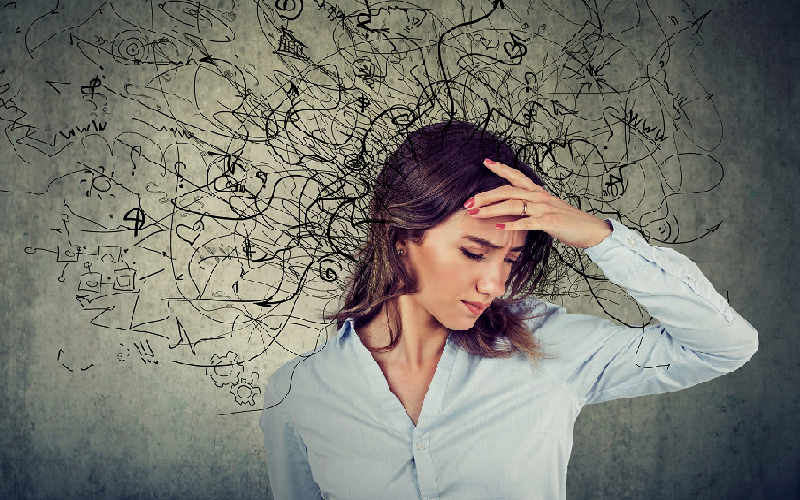
In a world where the pace of life is ever-accelerating, and pressures from various quarters seem unrelenting, anxiety has become a silent companion for many. Here we shed light on this often misunderstood condition, breaking down the nature, causes, and myths surrounding anxiety. From exploring the biological and psychological facets of anxiety to debunking common misconceptions, we go deep into what it means to live with and manage this condition.
Contents
Understanding Anxiety
Before we get into the depths of anxiety disorders, it’s crucial to grasp what anxiety really is. Anxiety, in its basic form, is a natural response to stress. It’s a feeling of fear or apprehension about what’s to come. However, when these feelings become overwhelming, last longer than six months, and impact our daily lives, they may signify an anxiety disorder.
The Nature of Anxiety
Biological Aspects
Biologically, anxiety is rooted in the body’s natural response to danger – the fight or flight response. It involves a series of hormonal and physiological responses that prepare us to confront or escape a perceived threat. When this response becomes overly sensitive or is triggered easily, it can lead to an anxiety disorder.
Psychological Factors
Psychologically, anxiety can be influenced by a person’s thought patterns, beliefs, and experiences. For example, individuals who tend to perceive situations as more threatening than they actually are, or who have experienced trauma, are more likely to develop anxiety disorders.
Common Anxiety Disorders
Understanding the different types of anxiety disorders is key to recognizing and treating them effectively.
Generalized Anxiety Disorder (GAD)
Generalized Anxiety Disorder is characterized by persistent and excessive worry about various things, including everyday routine life events. People with GAD find it difficult to control their worry and often expect the worst even when there is no apparent reason for concern [1].
Panic Disorder
Panic Disorder involves recurrent, unexpected panic attacks. These are sudden periods of intense fear that may include palpitations, sweating, shaking, shortness of breath, numbness, or a feeling that something terrible is about to happen.
Social Anxiety Disorder
This disorder involves a significant amount of fear in one or more social situations, causing considerable distress and impaired ability to function in at least some parts of daily life. These fears can be triggered by perceived or actual scrutiny from others.
Other Forms of Anxiety
There are other forms of anxiety as well, such as Phobias, which are intense fears of specific objects or situations, and Separation Anxiety Disorder, which is characterized by excessive fear of being apart from home or loved ones.
Myths and Misconceptions
It’s important to debunk some common myths about anxiety. For instance, anxiety isn’t just feeling nervous or stressed; it’s a serious mental health condition. Also, it’s not something that people can simply “snap out of” – it requires understanding, treatment, and support [2].

Causes of Anxiety
In understanding anxiety, it becomes vital to look at its root causes. Anxiety, like many other mental health conditions, does not have a single cause but is instead the result of a complex interplay of various factors. These include genetic predispositions, environmental stressors, and lifestyle choices.
Genetic Factors
Genetics play a significant role in anxiety. Studies have shown that if a close relative, like a parent or sibling, has an anxiety disorder, you’re at a higher risk of developing one too. However, genetics is not destiny; it merely increases susceptibility, not certainty.
Environmental Influences
Our surroundings and experiences greatly shape our mental health. Traumatic events, such as abuse, the death of a loved one, or witnessing violence, can trigger anxiety disorders. Chronic stress from work, relationships, or financial pressures also contributes significantly [3].
Lifestyle and Daily Habits
The way we live day-to-day can either protect us from or make us more susceptible to anxiety. Poor sleep habits, lack of physical activity, unhealthy diet, and substance abuse can all increase anxiety levels. Conversely, a healthy lifestyle can serve as a strong foundation for mental well-being.
Trauma and Stressful Events
Traumatic events, especially those occurring in childhood, can leave a lasting impact on the psyche, leading to anxiety disorders in adulthood. Additionally, ongoing stress from various life challenges, like work-related stress or chronic illness, can also be significant contributors.
Recognizing Anxiety Symptoms
Recognizing the symptoms of anxiety is a critical step in seeking help and beginning the journey to better mental health. Anxiety can manifest in various forms, and its symptoms can be classified into physical, emotional, and behavioral categories. It’s important to note that experiencing any of these symptoms does not automatically mean one has an anxiety disorder, but they can be important indicators.
Physical Symptoms
Anxiety often presents physical symptoms that can be easily mistaken for other medical conditions. These include:
- Heart Palpitations and Chest Pain: Often mistaken for heart problems, these symptoms can be alarming but are common in anxiety disorders.
- Shortness of Breath and Hyperventilation: These symptoms can intensify during a panic attack, making it feel like you can’t get enough air.
- Muscle Tension and Headaches: Persistent anxiety can lead to chronic muscle tension, resulting in headaches and migraines.
- Stomach Issues: Anxiety can upset the digestive system, leading to symptoms like nausea, diarrhea, and stomach cramps.
- Dizziness and Feeling Light-Headed: These symptoms can occur due to hyperventilation or as a panic response.
Emotional Symptoms
Emotional symptoms of anxiety can affect one’s mood and overall sense of well-being. These include:
- Persistent Worry or Fear: Excessive, uncontrollable worry about everyday matters is a hallmark of anxiety.
- Irritability: People with anxiety may experience heightened irritability and agitation.
- Feeling On Edge: A constant sense of restlessness or being ‘on edge’ is common.
- Difficulty Concentrating: Anxiety can make it hard to focus on tasks or make decisions.
- Fear of Losing Control: This can manifest as a fear of ‘going crazy’ or losing control in public.
Behavioral Changes
Anxiety can also lead to noticeable changes in behavior, such as:
- Avoidance: Avoiding people, places, or situations that are believed to trigger anxiety.
- Compulsive Behaviors: Engaging in repeated behaviors or rituals to alleviate anxiety.
- Social Withdrawal: Pulling away from friends, family, and social activities.
- Substance Abuse: Some may turn to alcohol or drugs as a coping mechanism.

Anxiety Coping Strategies and Techniques
Dealing with anxiety is not a one-size-fits-all approach. Various strategies and techniques can be employed to manage and reduce anxiety. This section explores some of the most effective methods, ranging from psychological therapies to lifestyle changes, to help you regain control and improve your mental health.
Mindfulness and Meditation
Mindfulness and meditation are powerful tools for managing anxiety. These practices involve focusing on the present moment and becoming more aware of your thoughts and feelings without judgment [4].
- Mindfulness: This involves paying attention to the present moment, acknowledging and accepting one’s feelings, thoughts, and bodily sensations. It’s used as a therapeutic technique to combat anxiety.
- Meditation: Regular meditation can help reduce stress and anxiety levels. Techniques like deep breathing, guided imagery, or focusing on a mantra can be particularly helpful.
Cognitive-Behavioral Therapy (CBT) Overview
Cognitive-Behavioral Therapy is a highly effective treatment for anxiety. It involves identifying and challenging negative thought patterns and behaviors and replacing them with more realistic and positive ones.
- Identifying Triggers: CBT helps in identifying specific triggers for anxiety.
- Challenging Negative Thoughts: Techniques are used to challenge irrational fears and beliefs.
- Behavioral Techniques: CBT includes exposure therapy, where one gradually faces their fears in a controlled and safe environment.
Relaxation Techniques
Relaxation techniques can be effective in reducing the physical symptoms of anxiety, such as muscle tension and rapid breathing.
Deep Breathing Exercises
Deep breathing exercises can help regulate the body’s stress response and induce relaxation.
Progressive Muscle Relaxation
This technique involves tensing and then relaxing different muscle groups in the body, which can help reduce the feelings of muscle tension that often accompany anxiety [5].
Lifestyle Changes
Making certain lifestyle changes can significantly impact anxiety levels.
Diet and Nutrition
Eating a balanced diet, avoiding excessive caffeine and sugar, and not skipping meals can help stabilize blood sugar levels, impacting mood and energy levels.
Exercise and Physical Activity
Regular physical activity is a natural anxiety reliever. Exercise releases endorphins, natural brain chemicals that enhance your sense of well-being.
Sleep Hygiene
Improving sleep quality is crucial for managing anxiety. Establishing a regular sleep schedule, creating a restful environment, and avoiding screens before bedtime can help.
References
[1] 11 tips for coping with an anxiety disorder
[2] How to manage anxiety and fear
[3] Knowledge and understanding can overcome fear and anxiety
[4] The Key to Overcoming Anxiety, Panic & Worry
[5] Overcoming Anxiety Starts with Taking Control
